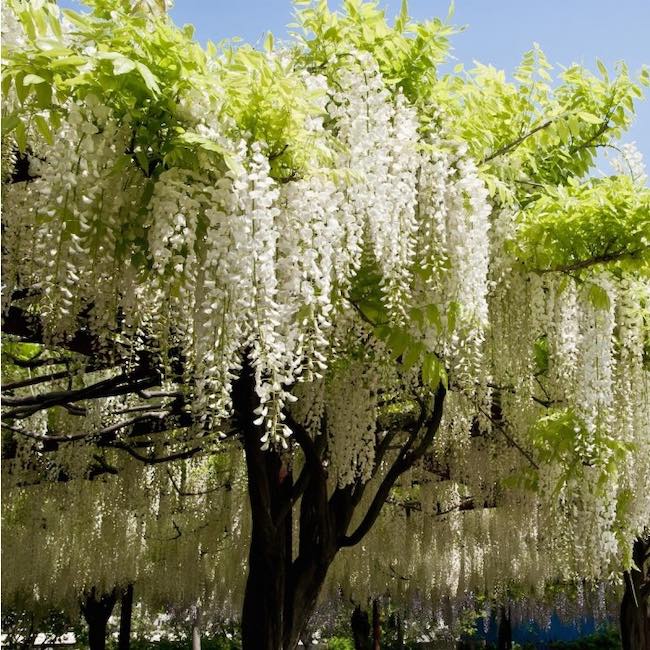Moving An Established Wisteria


How to Successfully Move Wisteria: Tips for a Smooth Transition
Introduction: If you find yourself in a situation where you need to move an established wisteria from your garden due to landscaping changes or construction work, it’s important to approach this task with care. Wisteria, known for its deep-rooted nature and limited fibrous roots, presents a unique challenge when transplanting. In this article, we’ll guide you through the process of relocating your wisteria, emphasizing the crucial consideration of avoiding frosty weather during the move.
Note: Wisteria should never be moved in frosty weather. Wait for the winter months when the plant is dormant to ensure a safe transition.
- Prune the Wisteria:
- Before starting the transplant process, prune the wisteria back significantly, using a saw if necessary. Cut the main stems back to approximately one meter in length. This step makes the plant more manageable and encourages healthy new growth.
- Digging up the Root Ball:
- Carefully dig around the wisteria, taking care not to damage the roots. The objective is to loosen the soil and expose the root ball. Try to retain as much soil as possible around the roots, which will aid in the plant’s recovery.
- Transplanting:
- Choose the new location for your wisteria, ensuring it receives adequate sunlight and has a sturdy support structure in place, such as a trellis or arbor.
- Plant the wisteria at the same depth as it was originally growing. Fill the hole with soil, gently patting it down to eliminate air pockets.
- Water the newly transplanted wisteria thoroughly to help settle the soil and provide essential moisture for its recovery.
- Monitoring and Patience:
- After transplantation, it’s important to exercise patience. Wisteria may take up to 12 months to display new buds and signs of recovery.
- During this waiting period, occasionally scratch the stem lightly to check for green tissue just beneath the surface. Green indicates that your wisteria is still alive and on the path to recovery.
Note: Do not forget that frosty weather can be detrimental to your recently transplanted wisteria. Keep an eye on the weather forecast and protect the plant if frost is predicted. Plus moving the wisteria in frosty weather with frost in the soil can cause burning to the roots.
- Prune Again:
- Once your wisteria begins to re-shoot and establish itself in its new location, consider pruning it again. Pruning encourages healthy new growth and helps maintain the desired shape of the plant.
Note: Moving a wisteria can be physically demanding due to its weight and size. Enlist the assistance of another person to make the process smoother and avoid unnecessary strain.
Moving an established wisteria can be a challenging but rewarding endeavor if done correctly. Remember to choose the right time for transplanting, take care during the process to protect the root ball, and provide proper support and care in its new location. Most importantly, always keep an eye on the weather and avoid moving your wisteria during frosty conditions to ensure its successful transition and continued health.




